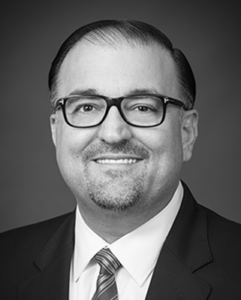People talk about the rural-urban divide, but the reality for health care and hospitals is that we are interconnected. And California’s rural hospitals are at a fiscal crossroad. Right now, 56% percent of rural hospitals are losing money on patient care — up 16% in just five years. Health care access for more than 2 million Californians is shrinking.
When a rural hospital closes, there’s a ripple effect across many areas: patient health is harmed; other hospitals may experience an influx of patients seeking care, which can lead to overcrowding and longer wait times; there are job losses, economic consequences, and the overall stability of health care across a region is placed at risk. We are seeing this play out following the closure of Madera Community Hospital last year.
Hospitals in the HASD&IC region are not classified as rural, or critical access (serving communities at least 35 miles from another medical facility), but they certainly feel more like rural hospitals than those in urban settings. Much of this is due to the proximity to specialty care and other needed services. The two Imperial County hospitals are meeting many needs within their communities, but for specialized services such as behavioral health, cancer care, and high-risk pregnancies, patients must travel greater distances for access.
To bridge the rural-urban gap in San Diego County, our hospitals are finding opportunities to provide care for patients in diverse geographic areas. The Rural Health Discharge Program was developed to make at-home care available to patients in rural communities after discharge from Sharp Grossmont Hospital in East San Diego County. The goal is to provide the same type of care for rural residents as those who live closer to a hospital, reducing readmissions and improving patient health. This program addresses the fact that people should not have to choose whether to get care because of travel time or a lack of transportation.
In times of crisis, our hospitals have worked together to ensure patients get the care they need. During the pandemic, hospitals in San Diego stepped up to assist Imperial County hospitals that were experiencing overwhelming numbers of COVID-19 patient admissions. They coordinated and shared resources, and transferred patients to locations with available capacity, including newly created alternate care sites in the community. This was a huge undertaking and a collaboration that saved lives.
As we seek solutions and innovate in our region, collective conversations focused on serving rural communities are taking place. This week, I attended CHA’s 2024 Rural Health Care Symposium in San Diego where health care professionals from across California came together in support of rural hospitals. Collaborations, partnerships, financial stability, workforce issues, and more were part of the discussion. It was gratifying to be around so many others focused on this issue.
There are big challenges facing rural hospitals in California that impact us all, but with continued dialogue and innovation, I am confident solutions will emerge to protect access to essential health care for people in rural California.
